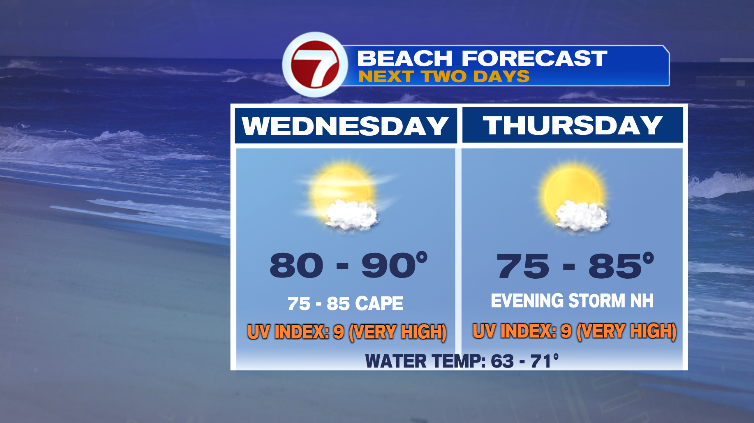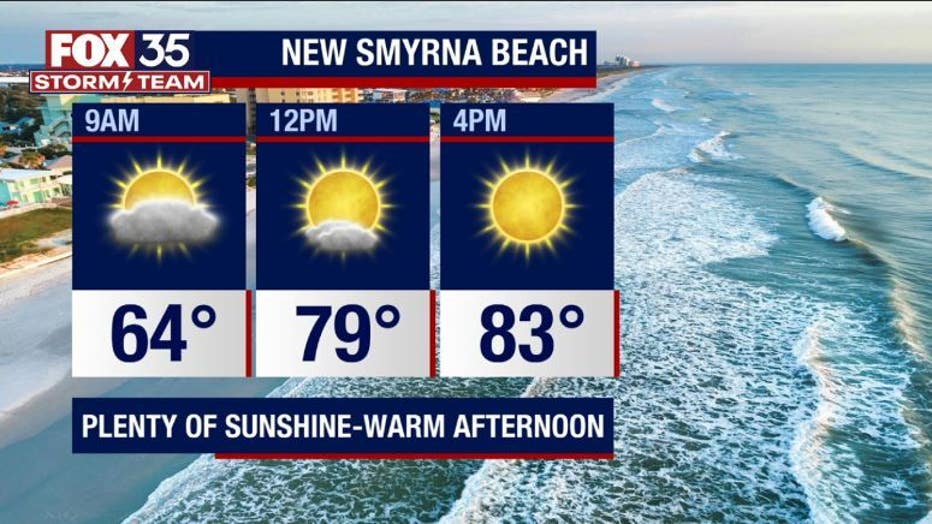If you’re planning a trip to Myrtle Beach, you’re in for a treat. Known for its beautiful beaches, vibrant nightlife, and family-friendly attractions, it’s a destination that promises a memorable experience. However, as you soak up the sun, it’s crucial to be aware of the UV Index. Knowing how to interpret this measure can help you enjoy your time outdoors while protecting your skin.
What is the UV Index?
The UV Index is a standardized measure of the strength of ultraviolet (UV) radiation from the sun at a particular time and place. It’s important for anyone who spends time outside, as high levels of UV radiation can lead to skin damage and increase the risk of skin cancer.
Understanding UV Radiation
UV radiation is divided into three types: UVA, UVB, and UVC. When it comes to sun exposure, UVA and UVB rays are the most significant.
- UVA Rays: These rays penetrate the skin deeply and can cause premature aging and wrinkles.
- UVB Rays: These are the main cause of sunburn and play a significant role in developing skin cancer.
- UVC Rays: These rays are absorbed by the ozone layer and do not reach the Earth’s surface.
Why is the UV Index Important for Myrtle Beach Visitors?
Myrtle Beach experiences high levels of UV radiation due to its geographical location and sunny climate. Being aware of the UV Index can help you:
- Plan your outdoor activities safely.
- Limit sun exposure during peak hours.
- Choose appropriate sun protection measures.
How is the UV Index Calculated?
The UV Index is calculated based on several factors, including the time of year, latitude, altitude, and cloud cover. The index is measured on a scale of 0 to 11+, where:
- 0-2: Low (Safe to be outside)
- 3-5: Moderate (Take precautions)
- 6-7: High (Protect skin and eyes)
- 8-10: Very High (Take extra precautions)
- 11+: Extreme (Avoid sun exposure)
The UV Index in Myrtle Beach Throughout the Year
The UV Index in Myrtle Beach can vary significantly throughout the year. Below is a breakdown of the average monthly UV Index levels:
| Month | Average UV Index |
|---|---|
| January | 2 |
| February | 3 |
| March | 5 |
| April | 7 |
| May | 9 |
| June | 10 |
| July | 10 |
| August | 9 |
| September | 6 |
| October | 5 |
| November | 3 |
| December | 2 |

Travel Tips for Managing UV Exposure in Myrtle Beach
1. Check the Daily UV Index
Before heading out, take a moment to check the UV Index for the day. Many weather apps and websites provide this information. When the index is high (6 and above), plan indoor activities during peak sun hours.
2. Wear Protective Clothing
Lightweight, long-sleeved clothing can help shield your skin from harmful rays. Consider getting clothing with a UV protection rating.

3. Use Sunscreen
Choose a broad-spectrum sunscreen with at least SPF 30 and apply it generously. Don’t forget to reapply every two hours, especially after swimming or sweating.
4. Seek Shade
Whenever possible, take breaks in the shade, especially during midday hours when the sun’s rays are the strongest.

5. Stay Hydrated
Drink plenty of water to keep yourself hydrated while enjoying the sun. This is particularly crucial during hot summer months.
6. Use Sunglasses
Protect your eyes from UV damage by wearing sunglasses that block 100% of UVA and UVB rays.

Destination Highlights: Myrtle Beach Attractions
Myrtle Beach is not just about sun and surf; it has a variety of attractions that cater to all ages. Here are some must-visit spots:
Myrtle Beach Boardwalk
The iconic Myrtle Beach Boardwalk is lined with shops, restaurants, and amusement parks. It’s perfect for an evening stroll, especially as the sun sets.

Broadway at the Beach
This entertainment complex features an array of shops, dining options, and attractions like the Ripley’s Aquarium. It’s a great place to spend a day out of the sun.
The SkyWheel
Experience breathtaking views of the coastline from the SkyWheel, one of the tallest observation wheels on the East Coast.

Pros and Cons of Visiting Myrtle Beach
Pros
- Beautiful sandy beaches perfect for sunbathing and swimming.
- A wide variety of entertainment options for families.
- Delicious dining options ranging from Southern cuisine to fresh seafood.
- Rich in outdoor activities, from golfing to water sports.
Cons
- High UV Index during peak summer months can increase sun exposure risks.
- Can be crowded during peak tourist season.
- Accommodation prices may be higher during peak season.

Personal Travel Experiences in Myrtle Beach
During my last visit to Myrtle Beach, we were excited to hit the water early in the day. However, we didn’t check the UV Index. As a result, we found ourselves sunburned by afternoon! Since that experience, I always check the UV Index before heading out.
Top Memory
Swimming in the Atlantic Ocean was the highlight, but the evening stroll on the Boardwalk, with the sun setting and the lights coming on, was just magical. We enjoyed our ice cream cones while listening to live music—just a perfect way to cap off a long day.

FAQs about the UV Index and Myrtle Beach
What is the highest UV Index in Myrtle Beach?
The highest UV Index in Myrtle Beach typically occurs in June and July, often reaching levels of 10 or more during midday hours.
How can I check the UV Index for Myrtle Beach?
You can check the UV Index through various weather apps, websites, or even local news. Be sure to check daily for accurate forecasts.
What sunscreen should I use at Myrtle Beach?
Choose a broad-spectrum sunscreen with an SPF of 30 or higher. Water-resistant formulas are ideal if you plan to swim or sweat.
Is the UV Index different in the winter?
Yes, the UV Index is generally lower in winter, but it can still be significant, especially on clear days.
Can I get sunburned on a cloudy day in Myrtle Beach?
Yes! Up to 80% of UV rays can penetrate clouds, so it’s essential to wear sunscreen even on overcast days.
Conclusion
Myrtle Beach is a fantastic destination, offering sun, fun, and relaxation. By staying informed about the UV Index and following sun safety tips, you can ensure a safe and enjoyable beach experience. Remember, protecting your skin is just as important as having fun under the sun!